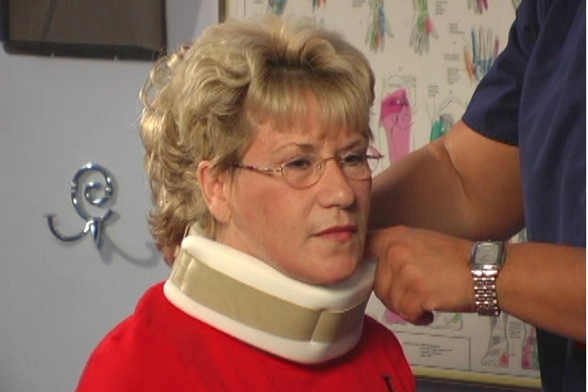The world-famous boxer Muhammad Ali once said that “Life is a gamble. You can get hurt, but people die in plane crashes, lose their arms and legs in car accidents; people die every day. Same with fighters: some die, some get hurt, some go on. You just don’t let yourself believe it will happen to you.”
It’s true, especially when it comes to the neck and back associated with whiplash. According to the Spine Research Institute of San Diego, for every 6 million people who survive a rear impact collision that takes place at low speed, about 300,000 will suffer pain severe enough to disable them for life. That number is equal to the population of Wyoming!
Whiplash Explained
Whiplash is a type of injury to the neck and spine that is caused when some type of trauma propels the body forward while the head remains in place. The head in turn rocks back and then jerks forward, the movements in both directions violent enough to stretch or even tear muscles, ligaments, and tendons.
Ligaments attach bones to other bones, while tendons attach muscles to bones. As with muscles, both of these are also considered soft tissues. During an accident, it’s easy for soft tissues to stretch beyond their usual limits. Regardless of whether it happens to muscles, ligaments, or tendons, the end result is quite painful.
Causes and Symptoms of Whiplash
The main cause of whiplash is car accidents, such as being in an automobile that is struck from behind by another vehicle. However, because whiplash can occur at speeds a low as 15 miles per hour, it can occur while playing sports, riding roller coasters, biking, or even slipping and falling.
Symptoms of whiplash range from very mild to very severe. For example someone experiencing this condition might feel nothing more than a mild headache or light muscle spasms in their back and neck. But someone who experiences a more severe form of whiplash could experience migraines or nerve damage in the form of blurry vision and ringing in the ears.
Recovering from Whiplash
It’s imperative to see a doctor or visit the emergency room as soon as possible after an accident, especially when it involves injuries to the back, neck, and head. A doctor can not only diagnose whiplash, but he can also determine whether enough evidence exists to support a diagnosis for some sort of neurological problem as well.
A typical case of whiplash does not often require an extended hospital stay. Often a doctor will prescribe care that can be administered at home. This may or may not include a prescription for pain medication as well. Here are some of the things that might be involved in an at-home recovery plan for whiplash.
- Cold compress – Cold or ice packs applied to the injured area will help keep swelling to a minimum. You can apply them for 15 to 20 minutes per hour for the first 72 hours or so. And don’t forget to place something like a towel between the ice pack and bare skin.
- Medication – As stated previously, some doctors will prescribe heavy duty pain killers, but often people manage to get by with some form of over-the-counter remedy like Tylenol, Advil, or Aleve, or the generic versions of the drugs.
- Limit movement – Rest is important because it gives your body the time it needs to heal. Pushing yourself to resume normal activity before your body is ready will only slow down the healing process, and worse it could cause you to re-injure the affected area or create some new kind of injury.
- Therapy – Your doctor might prescribe chiropractic, massage, or even acupuncture therapy to aide in the recovery process. If this happens, it’s important to follow all instructions and keep all appointments until your body is fully healed.
Whiplash Claims
In some parts of Europe, minimum speed limits are required for whiplash claims. This prevents motorists from claiming whiplash from an accident sustained in a parked vehicle. (2) North American laws are more lenient, but regardless of where you live some tips for what to do or, sometimes more importantly, what not to do after an accident remain the same.
As one personal injury and Sacramento dui attorneys advise on their website, you should look for witnesses and get their information, turn on your car’s hazard lights, and take pictures. But you should not sign anything, argue with anyone, or accept any kind of payment from the other party – even if there is just minor damage visible at the time of the accident. The last thing you want to do is add more stress to recovering from an accident by chasing down insurance claims.
Freelance writer Sophie Evans is a full-time wife and mother of two active children. She enjoys writing because of the various topics that she gets to read about during the research part of her job. For example, she learned a lot about different ways lawyers help people at http://www.travisblacklaw.com/, one of the sites she used to research a series of articles about accident recovery.





